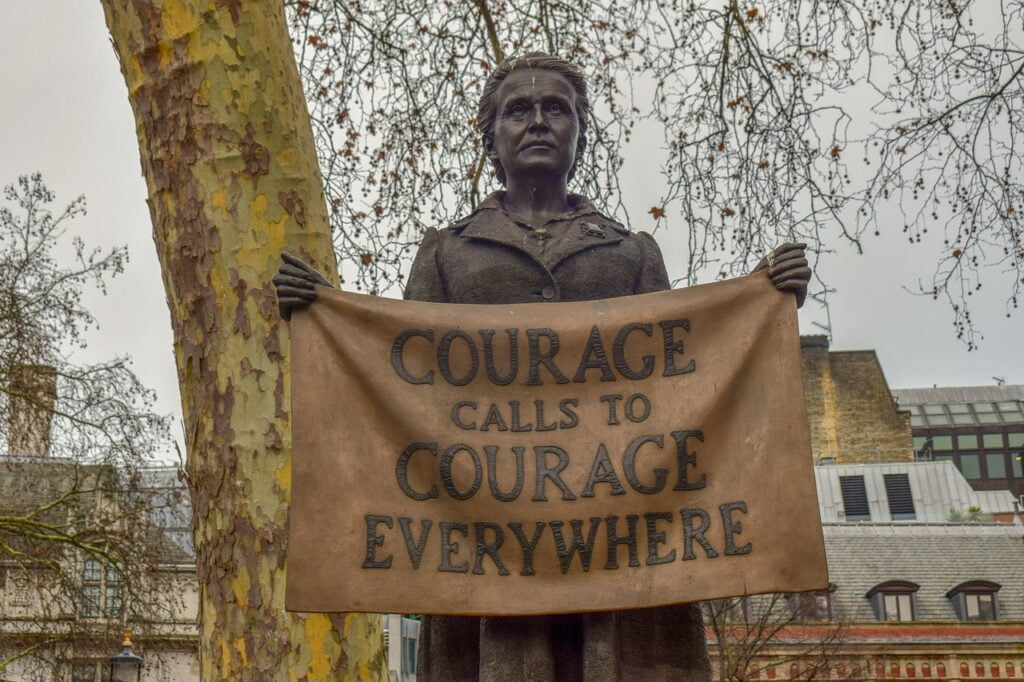Introduction
In India, the path to women’s rights has been long and tumultuous. Before the 19th century, women were largely seen as mere assets in a patriarchal society. With no legal rights or societal contributions, their lives were confined to the shadows of their fathers or husbands. Education was a distant dream, property ownership was unheard of, and political participation was non-existent. Health rights were abysmal, and the concept of divorce was beyond reach. This scenario began to change in the 19th century, marking the dawn of the women’s rights movement in India.
Key Milestones in the Timeline of Women’s Rights in India
The Abolition of Sati (1829)
The practice of ‘Sati’ involved a widow being burnt alive on her husband’s funeral pyre, either voluntarily or under duress. In 1829, Governor-General Lord William Bentinck enacted the Sati Abolition Act, declaring the practice illegal throughout India. To reinforce this, the Commission of Sati (Prevention) Act was introduced in 1987, stipulating severe punishments for those abetting or glorifying Sati.
Commonwealth of India Bill (1925)
Introduced in April 1924, the Commonwealth of India Bill was a pivotal step in the Indian nationalist movement led by George Lansbury. It included a comprehensive section on fundamental rights, promoting gender equality, universal education, the right to health, freedom of expression, and the elimination of sex-based discrimination.
The Dowry Prohibition Act (1961)
Dowry, the practice of transferring money or property from the bride’s family to the groom’s family, was addressed by the Dowry Prohibition Act of 1961, effective from October 2, 1961. The 1986 amendment strengthened the law, introducing IPC Section 304B(BNS Section 80) and Indian Evidence Act Section 113B(BSA Section 118), which dealt with dowry-related violence and deaths.
The Immoral Traffic (Prevention) Act (1956)
Initially enacted as the Suppression of Immoral Traffic in Women and Children Act (SITA) in 1956, this law was later amended and renamed in 1978 to the Immoral Traffic (Prevention) Act. It aims to combat human trafficking, with IPC Sections 370 and 370A providing legal mechanisms for the protection and rehabilitation of victims.

🔍 Recommended Reading
To further explore the historical evolution of legal systems, we recommend reading the following article:
- 📌 From Ancient Codes to Modern Justice: A Journey Through the Evolution of Law - This article provides a comprehensive overview of how legal systems have evolved from ancient times to the present, offering context for understanding the milestones in women's rights and broader legal history.
Landmark Legal Developments
Vishakha Guidelines (1997)
The case of Bhanwari Devi, a social worker from Rajasthan who was gang-raped while trying to prevent child marriage, led to the formulation of the Vishakha Guidelines by the Supreme Court in 1997. These guidelines were later codified in the Sexual Harassment of Women at Workplace (Prevention, Prohibition, and Redressal) Act, 2013. The guidelines define sexual harassment and mandate the establishment of complaint committees in workplaces to address grievances.
Domestic Violence Act (2005)
The Protection of Women from Domestic Violence Act, 2005, was enacted to safeguard women from physical, mental, verbal, and sexual abuse in domestic settings. This act provides civil remedies and protection orders, with non-compliance resulting in criminal consequences.
Mathura Rape Case (1972)
The case of Mathura, a minor girl raped by two policemen while in custody, led to significant legal reforms after the initial acquittal of the accused. Public outrage resulted in the Criminal Law (Amendment) Act of 1983, introducing Section 114A in the Indian Evidence Act, which presumes the absence of consent in rape cases. The Criminal Law (Amendment) Act of 2013 further strengthened rape laws, including provisions for custodial rape and prohibiting the publication of the victim’s identity (IPC Section 228A)(BNS Section 72).
Nirbhaya Case (2012)
The brutal gang rape of a young woman in Delhi on December 16, 2012, shook the nation and led to comprehensive legal reforms. The Criminal Law (Amendment) Act, 2013, introduced stricter penalties for sexual offenses and amendments to the IPC, Indian Evidence Act, and the Protection of Children from Sexual Offences Act, 2012.
Contemporary Legal Framework
Marital Rape
Despite various advocacy efforts, marital rape is not explicitly criminalized in India. However, the Criminal Law (Amendment) Act, 2013, raised the age of consent from 16 to 18 years, aligning with the Protection of Children from Sexual Offences (POCSO) Act, 2012, which defines consensual sex as involving individuals aged 18 and above.
Conclusion
Significant legal milestones and progressive reforms have marked the journey of women’s rights in India. From the abolition of Sati to contemporary laws addressing domestic violence and sexual harassment, these legal frameworks have played a crucial role in improving the status of women. Despite these advancements, continuous efforts and reforms are necessary to address ongoing challenges and ensure gender equality in every sphere of life.
📚 Recommended Reading
To gain further insights into the social and legal aspects of divorce in India, we suggest exploring the following article:
- 📌 Top Reasons For Divorce in India: Understanding The Trends And Legal Implications - This article provides an in-depth look at the common causes of divorce in India and examines the legal implications and trends associated with it.
References- en.wikipedia.org THE COMMISSION OF SATI (PREVENTION) ACT, 1987 www.constitutionofindia.net THE IMMORAL TRAFFIC (PREVENTION) ACT, 1956 www.indiacode.nic.in www.indiacode.nic.in en.wikipedia.org www.indiacode.nic.in THE PROTECTION OF WOMEN FROM DOMESTIC VIOLENCE ACT, 2005 en.wikipedia.org www.indiacode.nic.in en.wikipedia.org www.indiacode.nic.in en.wikipedia.org en.wikipedia.org www.indiacode.nic.in THE PROTECTION OF CHILDREN FROM SEXUAL OFFENCES ACT, 2012 THE BHARATIYA SAKSHYA ADHINIYAM, 2023 THE BHARATIYA NYAYA SANHITA, 2023 THE DOWRY PROHIBITION ACT, 1961

